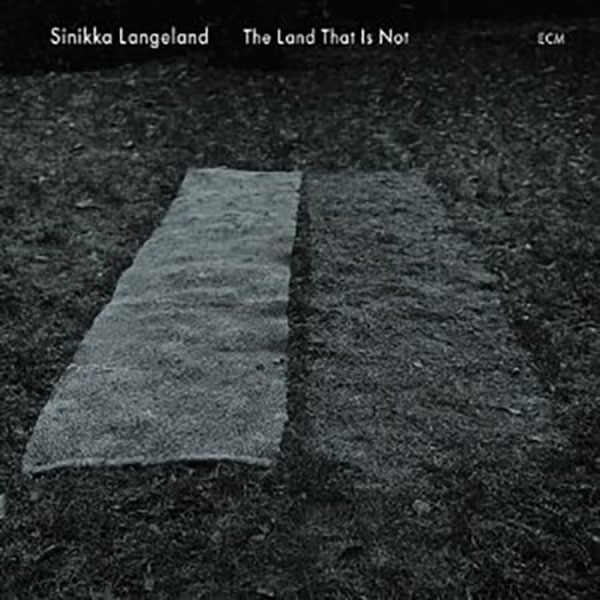
by Tim Owen
December 19, 2011
/ ALBUM
A beguiling mix of folk music, sung poetry and ECM's house brand of subtle improvisation.
Norwegian folksinger Sinikka Langeland plays a kantele, a type of zither. On ?The Land That is Not’, her third album for ECM, her repertoire is a beguiling mix of folk music, sung poetry and what might be described as ECM’s house brand of subtle improvisation. It is a maturation of the style forged on her 2006 label debut, ?Starflowers’, which featured the same remarkable line-up as the present album, and its follow-up, ?Maria’s Song’, for just kantele, violin and organ. The compositions on ?The Land’ each frame a lyric, in Swedish or Norwegian but accompanied by translations in the booklet, which is sourced from the modernist poetry of Edith S?dergran and Olav H?konson Hauge.
Langeland’s trumpeter Arve Henriksen is now an ECM regular, having apparently stepped back from his involvement in Supersilent. ?The Land’ is something like his tenth outing for the label, all but one of which has been a supporting role, as on saxophonist and bandmate Trygve Seim’s 2001 ECM debut, ?Different Rivers’. Seim has likewise recorded various dates for ECM in the years since, including a double-header with Frode Haltli, Yeraz, which I reviewed for the Jazz Mann in December 2008: http://bit.ly/smTj7u. Anders Jormin has played double bass on ECM dates for big hitters such as Charles Lloyd, Don Cherry, and Bobo Stenson over the years, but to my mind he is particularly notable for his contributions to ?Leosia’ and other Tomasz Stanko albums of the late 90s. Drummer Markku Ounaskari is new to me, but has had a few well-received recordings on Finnish labels, and after contributing to Langeland’s ?Starflowers’ he formed his own group to record last year’s ?Ku?ra’ (subtitled ?Psalms and Folksongs’) for ECM, so winning the 2010 Emma best jazz album of the year award, the Finnish equivalent of a Grammy.
While the musicianship on display and its realisation are uniformly impeccable, the blessings of their involvement are partially offset by the airlessness or Eicher’s production. Whereas the best folk music is imbued with the coarse grain of mediated experience, here the grain of expression is smoothed over and tamped down. Langeland’s music still shines bright, but it is softened and guttering, like a flame under glass. As a result, the album is best cherry-picked, or rather, since track by track standards are high, enjoyed in part rather than tackled in one sitting.
The album’s title track demonstrates immediately that Langeland’s crystal-clear enunciation of each poem’s lyric goes hand in hand with her rendering of its emotion, and that the tensile clarity of her instrument and her wonderful group are a perfect match.
“Triumph of Being” matches Langeland’s glassy kantele with swirling up-tempo brass and an ascending bassline, then settles into a rather jaunty theme with splashes of middle eastern flavour. “The River Murmurs” is just as subtly dramatic. It sets a lyric by Hauge to evocative bowed metal and rippling wooden percussion. When the words are over, a groundswell of music is borne along on a martial rhythm, as inexorable as a river in spate, and abating as suddenly.
“Lucky Cat” gets a punchy, jazzy interpretation, with trumpet and saxophone in call and response mode and the bass thrumming below. It’s an exception to the rule. Elsewhere Langelannd’s accompaniment invariably colours and informs the ensemble sound. Henriksen sets the initial ?fourth world’ ambience of “It’s The Dream” but as soon as Langeland sings she reclaims the piece, and subsequent solos are carefully modulated to sympathise with her kantele’s range and tonality.
In “The Day Cools” the emphasis is purely on Langeland’s supple duet with Jormin’s bass, and the arrangement for “The Rose” is just as straightforward. Langeland laces her own singing of the lyric?“I stood in spring rain and drank in longing”?with delicate traceries of kantele, to Seim’s wonderfully smoky saxophonic accompaniment.
The final piece, “Slowly the Truth Dawns”, is the one where the various instrumental colours are most skilfully integrated. At its close, as a dolorous tom tom pulse sets a slow, stately pace each musician makes increasingly minimalist gestures, until the end comes with a soft gong hit and subtle glints of cymbal wash.
Langeland has been recording since 1994, when her solo debut ?Langt innp? skoga’, initiated a ten-year association with the Grappa Musikkforlag label. ?Har du lyttet til elvene om natta’ (1996) features Anders Jormin among an ensemble playing music set to poems by Hans B?rli, while subsequent releases explored Finnish folksong alongside the music of Bach. A project to revive the songs of the traditional Finnish culture of her adopted home of Finnskogen, Norway inspired more recent works such as the solo ?Tirun lirun’ (2001) and ?Runoja’ (2002), which was recorded by a small group featuring Arve Henriksen. You can find more details where I found these: http://www.sinikka.no/.
blog comments powered by Disqus